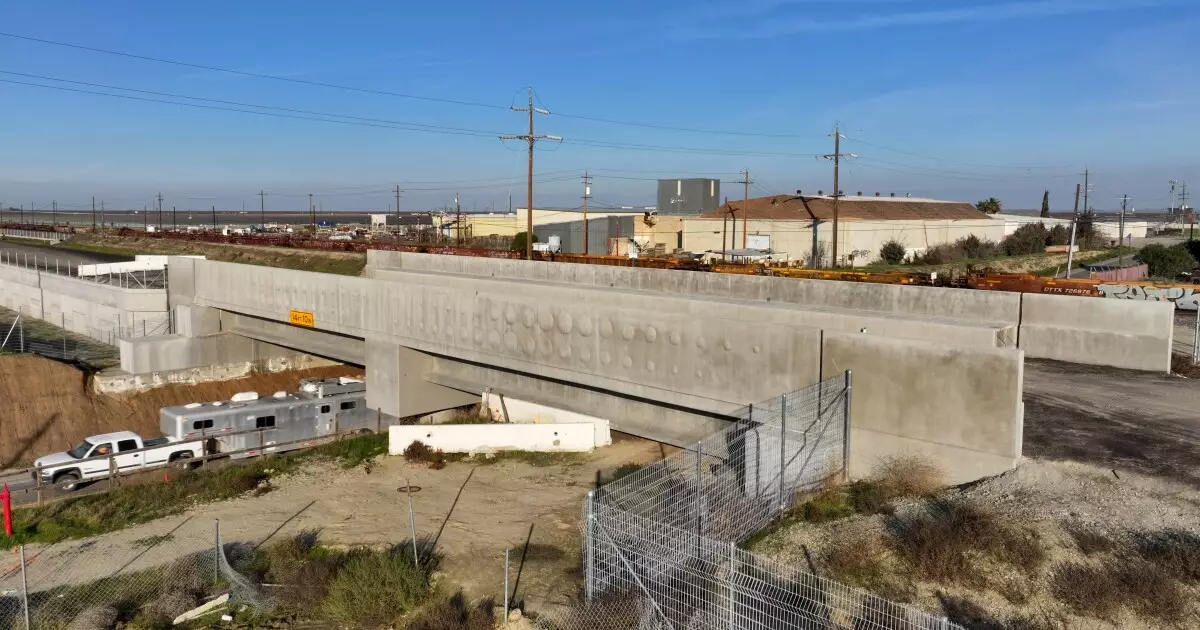The controversy surrounding California’s high-speed rail project has reignited once again, ushering in serious implications amid federal scrutiny. The Trump administration’s recent decision to initiate a formal investigation into the California High-Speed Rail Authority (CHSRA) underscores an ongoing debate over accountability in public infrastructure projects and the prudent use of taxpayer dollars.
In a press conference held in Los Angeles, Transportation Secretary Sean Duffy announced the initiation of a comprehensive review to evaluate whether California’s high-speed rail initiative is honoring its commitments to federal funding agreements. This investigation comes as California struggles with an ambitious bullet train project that has experienced significant delays and skyrocketing costs. Since 2009, California has received about $7.2 billion in federal grants, including funds from the most recent Infrastructure Investment and Jobs Act. The core of the federal inquiry concerns whether these funds have been appropriately utilized and whether the state has lived up to its fiscal commitments. Duffy remarked on the need for accountability, emphasizing that federal grants should not be disbursed without rigorous oversight.
Critics of the project frequently highlight discrepancies in the CHSRA’s financial reporting, noting that there’s a substantial gap between federal expenditure estimates and the authority’s own accounting. The Department of Transportation (DOT) claims the agency has spent $15.7 billion, while the CHSRA insists the total is only $13 billion. This confusion raises concerns regarding transparency and effective budget management. For taxpayers or voters who previously supported the rail line with a $10 billion ballot measure in 2008, the current realities of a ballooning budget of $128 billion and continuous setbacks conjure feelings of disillusionment.
California’s high-speed rail project was initially proposed as a groundbreaking venture to connect major metropolitan areas, promising to be operational by 2020 at a mere $33 billion cost. However, the timeline and financial estimates have morphed drastically. Now facing an astonishing cost overruns that could potentially amount to $128 billion, with no definitive completion date in sight, the project faces skepticism both from constituents and political adversaries. Duffy cited a report from the CHSRA’s inspector general highlighting a $6.5 billion funding gap that threatens the feasibility of completing even the first segment of the line.
Beyond the financial quagmire, the oversight committee has outlined significant skepticism regarding the project’s viability. Activist groups and Republican lawmakers alarmed by the lack of progress have urged for federal examination, asserting that the financial mismanagement warrants serious sanctions. Thus, the investigation is as much about political rhetoric and accountability as it is about the actual logistics of building a high-speed rail system.
Interestingly, the CHSRA has welcomed the investigation, asserting confidence in its financial accountability and the positive socioeconomic impact claimed from the project, which they allege has generated approximately $22 billion for the state’s economy thus far. CHSRA’s CEO Ian Choudri responded to the pending review by promising that all funds are appropriately tracked, maintaining that they stand firm on through-investing in California’s infrastructure future.
Despite official support for the rail system, vocal protests from advocates demanding the project come to fruition illustrate the division among Californians. Many protestors interrupted Duffy’s press conference, lamenting a lack of progress and demanding action. Their frustrations reflect a broader public disappointment in state leadership’s ability to fulfill ambitious promises regarding infrastructural innovation.
A Political Narrative and Accountability
Some analysts interpret the Trump administration’s probe as politically motivated rather than a genuine pursuit of accountability. The ongoing tensions between California’s Democratic leadership and the Republican federal administration set the stage for an ideological clash reminiscent of partisan battles over resource allocation. Notably, historical interactions between federal authorities and state-level projects have frequently revealed a contentious power dynamic.
Amid this scrutiny, it’s critical to ask profound questions: “What has gone wrong?” “At which point did this ambitious rail vision falter?” As public figures and officials navigate the complex arena of funding and accountability, these questions remain paramount in determining the future of California’s high-speed rail project.
The federal investigation into CHSRA presents both an opportunity for introspection and a thrust for accountability within a multifaceted and evolving infrastructure debate. As California aims to define its transportation future amidst far-reaching ambitions and constraints, the implications of this scrutiny are bound to resonate through both political and public dialogue for years to come.

